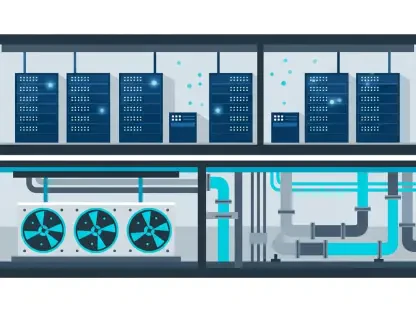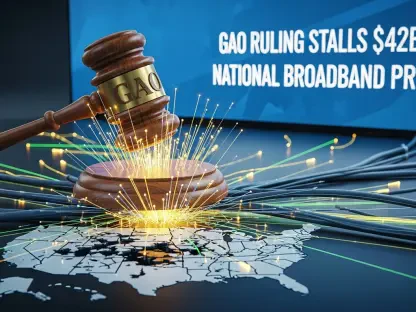In a state as vast and diverse as California, access to reliable internet is no longer just a convenience—it’s a lifeline. Picture a single parent in a rural Central Valley town, struggling to help their child with online homework because high-speed broadband costs more than their monthly grocery budget, highlighting the urgent need for digital equity across the Golden State. This stark reality fuels a pressing question: how can digital equity become a reality for all Californians? As of 2025, state regulators are taking bold steps to bridge this gap through a landmark merger between Verizon and Frontier Communications, setting a precedent for affordable connectivity that could reshape lives across the Golden State.
Why Affordable Internet Is Critical in California
The digital divide in California remains a glaring issue, with nearly 1.5 million households lacking access to high-speed internet, according to recent state data. This gap disproportionately impacts low-income families, rural communities, and urban pockets where the cost of broadband often exceeds monthly budgets. Without reliable connectivity, students fall behind in education, workers miss out on remote job opportunities, and seniors struggle to access telehealth services—barriers that deepen existing inequities.
State officials recognize that internet access is now as essential as electricity or water, prompting urgent action to ensure no one is left offline. The stakes are particularly high in a state that prides itself on innovation yet grapples with stark disparities. This push for affordability isn’t just about convenience; it’s about leveling the playing field in a world increasingly defined by digital interaction.
California’s response hinges on leveraging corporate mergers to serve the public good, with the Verizon-Frontier deal emerging as a pivotal test case. By imposing strict conditions on such transactions, regulators aim to transform internet access from a privilege into a fundamental right, setting the stage for broader systemic change.
California’s Regulatory Fight Against the Digital Divide
Beyond individual struggles, the digital divide reflects a systemic challenge that California has battled for years. Rural areas like parts of the Sierra Nevada and urban low-income neighborhoods in Los Angeles often lack the infrastructure or pricing models needed for widespread connectivity. The California Public Utilities Commission (CPUC) has stepped in as a key player, using its authority to ensure telecom giants prioritize public interest over profit margins.
This regulatory push aligns with national efforts to close the digital gap, as seen in federal initiatives like the Broadband Equity, Access, and Deployment (BEAD) program. Yet, California’s approach stands out for its assertiveness, particularly in how it ties merger approvals to tangible benefits for underserved communities. The state’s intervention in the Verizon-Frontier acquisition underscores a broader commitment to digital equity as a policy cornerstone.
Through such oversight, California positions itself as a leader in redefining how telecom mergers can address societal needs. The CPUC’s strategy reflects a growing trend among states to wield regulatory power as a tool for social good, ensuring that corporate consolidations don’t just benefit shareholders but also the most vulnerable residents.
Specific Conditions Imposed on Verizon’s Merger
Diving into the specifics, the CPUC has laid out stringent requirements for Verizon as part of its acquisition of Frontier Communications. A standout condition mandates that Verizon offer broadband plans at just $20 per month for a decade, starting in early 2026. These plans must meet defined speed thresholds—300/300 Mbps for fiber connections and 100/20 Mbps for fixed wireless—ensuring quality alongside affordability.
Additionally, Verizon is obligated to expand infrastructure significantly, with a commitment to build 75,000 new fiber passings and 250 fixed wireless towers across California. This expansion targets underserved regions, directly addressing gaps in connectivity that have long plagued rural and low-income areas. Such measures aim to bring high-speed internet to thousands of households previously left behind.
Comparatively, other states like Pennsylvania have approved the same merger with less rigorous demands, lacking a fixed price mandate for affordable plans. This contrast highlights California’s aggressive stance, further reinforced by aligning these offerings with the state’s Lifeline program to support low-income residents. These conditions signal a bold blueprint for how regulatory frameworks can drive digital inclusion.
Stakeholder Perspectives on the Merger Conditions
To understand the broader impact, insights from key players reveal both optimism and tension surrounding the deal. Ernesto Falcon, a program manager at CPUC, emphasizes that aligning merger outcomes with public interest is non-negotiable, stating, “Affordable broadband must be a baseline, not an afterthought, for California’s future.” His perspective underscores the state’s resolve to prioritize residents over corporate interests.
However, not all reactions are positive, as industry groups voice significant concerns. Organizations like USTelecom and ACA Connects argue that fixed-rate regulations could discourage investment in critical infrastructure, potentially slowing network growth. This pushback reflects a long-standing debate about balancing affordability mandates with the financial realities of telecom expansion.
Analyst Blair Levin from NSR Policy offers a nuanced take, suggesting that while diversity, equity, and inclusion (DEI) tensions between state and federal priorities pose challenges, the merger is unlikely to collapse. “Verizon’s legal team will navigate these waters without derailing the deal,” Levin notes, pointing to a cautious confidence that regulatory hurdles can be overcome. These diverse viewpoints paint a complex picture of hope and contention.
The Road Ahead for Californians Seeking Affordable Internet
Looking toward implementation, the CPUC’s conditions promise tangible changes for California residents, especially those in economically challenged areas. Low-income households may soon access subsidized plans through the Lifeline program, with affordable broadband potentially becoming a reality by 2026. This timeline offers a clear horizon for families eager to connect without breaking the bank.
Infrastructure expansion also holds promise, as new fiber passings and wireless towers could transform connectivity in remote and urban underserved zones. However, challenges remain, including unresolved DEI policy conflicts with federal guidelines, which could complicate Verizon’s compliance efforts. Bridging this state-federal divide will require careful negotiation to ensure benefits reach consumers without bureaucratic delays.
For Californians, staying informed about these developments is crucial, as the rollout of affordable plans and infrastructure will directly impact daily life. Monitoring Verizon’s progress and advocating for transparency can help hold the company accountable. As this merger unfolds, it serves as a litmus test for how corporate and regulatory collaboration can address one of society’s most pressing needs.
Reflecting on a Milestone for Digital Equity
Looking back, California’s bold intervention in the Verizon-Frontier merger marked a significant chapter in the fight for digital equity. The stringent conditions imposed by the CPUC, from affordable pricing to infrastructure commitments, set a powerful example of how state oversight could reshape access to essential services. These efforts tackled deep-rooted disparities that had long hindered countless residents.
Moving forward, the focus shifted to ensuring that Verizon met its promises while navigating complex regulatory landscapes. Stakeholders across the spectrum needed to collaborate on resolving lingering issues like DEI policy conflicts. Sustained public engagement and advocacy became vital to guarantee that the benefits of affordable internet reached every corner of the state.
Ultimately, this initiative laid the groundwork for a future where connectivity was no longer a barrier but a bridge to opportunity. California’s journey offered lessons for other states, proving that strategic regulation could turn corporate mergers into catalysts for social progress. The path ahead demanded vigilance and innovation to sustain this momentum for generations to come.









